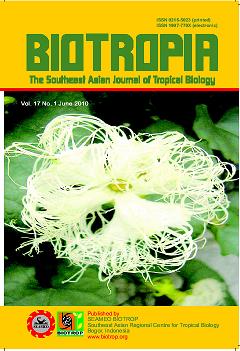
Tags
INDUCTION OF CALLUS FORMATION FROM DIFFERENT PARTS OF Citrus grandis (OSBECK) FLOWERS
Content Language : English

The objectives of the present work were to study the capability of pomelo’s floral tissues to produce callus and to investigate the influence of plant growth regulators on callus induction and development. Various parts of flower namely petal, sepal, style, ovary, pistil and cup base were cultured onto Murashige and Skoog (MS) basal medium supplemented with different level of 2,4-dichlorophenoxyacetic acid (2,4-D), 6-benzylaminopurine (BAP) and 6-Furfurylaminopurine (kinetin). It was found that different part of flowers favored different level of hormone for callus induction. The highest formation of callus were obtained from petal and sepal cultured on MS media supplemented with 1.5 mg/l kinetin. For the style and pistil, 50 ± 2.3% of the explants had developed callus when cultured on MS media supplemented with 0.05 mg/l and 0.10 mg/l BAP respectively. On the other hand, sucrose agar (SA) media alone had managed to induce callus formation from almost every part of the flowers with a success rate between 7.69 ± 0.32 to 50 ± 3.18%. Callus formation was preferred from the uncut part of flowers as shown in the study on petal with percentage of formation was 14.6 ± 0.35%.
Link

This work is licensed under a Creative Commons Attribution-NonCommercial-NoDerivatives 4.0 International License.
